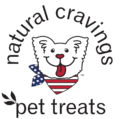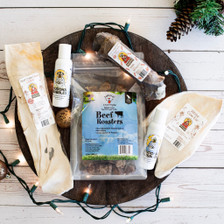More than words can express, you love your dog, and they are there for you as a devoted friend. Perhaps that’s why we take any chance we have to spoil them with treats. Dog treats are available in grocery stores, online sellers, and pet supply stores. You may also prepare dog treats at home. Treats are always welcome and they are easy to get.
Pet owners all across the world are humanizing their animals. We are spending more money on
high-end pet daycare, grooming, and eating excursions. One of the pet expenses with the greatest growth is pet treats. But do dogs really need treats?
TREATS AND LEARNING
Treats have a wonderful place in the world of training your dog. While they aren’t as reliable as other methods, using treats can be a great way to start working on commands. Small bits of treats are used as a quick reward for good behavior.
The downside of using this method is that if you don’t happen to have treats on hand, then your dog might not listen. So it might be better to just give your pup treats whenever as a “just because I love you” treat.
WHY DO WE FEEL GUILTY?
Sometimes we feel like we can’t give our dog the attention they deserve. Long separations are a result of social and work responsibilities. Treats take the place of attentiveness.
Social dynamics in households with many pets. Adding treats can help to relieve tension and create a pack-like bond within households with multiple animals.
To make up for hardships of the past. When we rescue pets from dire situations, we might give them too many treats. We do this to erase the memory of the previous suffering.
Personal matters. We often turn to our animals to help us deal with our problems. We find that spoiling children helps us deal with our own challenges.
HOW TO GIVE YOUR PET A TREAT IN A SAFE WAY?
1) Before buying any dog treats, whether in-store or online, make sure to check the ingredient list. You may detect any additives that might not be the best choice for your dog by reading the label. If your dog has allergies, it’s important to watch out for any ingredients that can make your pet have an allergic reaction. Otherwise, the dog treats can cause more harm than good.
2) When giving your dog a dog treat, be sure to follow the instructions in the feeding guide. Because calories matter, you wouldn’t want your dog to gain unnessary extra weight. You may sometimes need the help of a veterinarian to decide how many dog treats your dog should receive. Given that older dogs rarely engage in more demanding forms of physical activity they may also have sensitive stomachs. Young, active canines may be able to enjoy more dog treats than older dogs.
3) Offer treats separately. When you give your dog treats, you should do so either by hand or in a clean, well-kept bowl.
4) Give your dog some room when he has the treat in his mouth. Dogs dislike interruptions when eating. Therefore they prefer some privacy when given a reward.
5) When giving dog treats, always offer fresh, clean water. No matter if he is eating food or a
particular treat, never underestimate the value of pure water. For the health and hygiene of dogs, their dish must be clean too.
WHAT TO AVOID?
1) Avoid overfeeding your dog. Dog treats may include some nutrients. Yet, your dog should eat food as their main source of nourishment.
2) Avoid giving your dog junk food and human treats. Like how such foods give your body more calories than it needs, giving your dog too many treats might be harmful.
Give your dog no chocolate! Make sure chocolate is out of your pet’s reach because it might be hazardous. Grapes, raisins, onions, and coffee-containing foods – might be harmful to dogs as well.
3) You can give your dog treats for being good. A dog that is hyper and jumping around, climbing on things, etc. should not get a treat. Giving your dog treats while they’re hyper will perpetuate bad habits. Wait until they are lying or sitting down. When the dog is quiet, you should offer him a treat.
4) Avoid giving goodies at mealtimes. When is time for a treat, give it a treat, but never in place of a healthy meal.
FINAL THOUGHTS
The health of your dog depends on you knowing the proper types of treats to offer. The perfect serving size, and the ideal times to give treats. It is important to remember that a treat cannot replace a meal.
Although you often have a busy schedule, spending quality time with your dog is good for both your health and the health of your furry friend. If you give a treat to a dog that is not active, and in large quantities, it can harm your dog. It even leads to obesity. But after a long walk, it’s okay to give a treat. It is important to balance regular nutrition, and physical activity, and a treat is fine.
If you have any doubts about the dog’s diet or its weight, it would be best to consult a veterinarian. Based on your dog’snutritional needs and physical activity, the veterinarian will recommend how many treats you can give per day.

